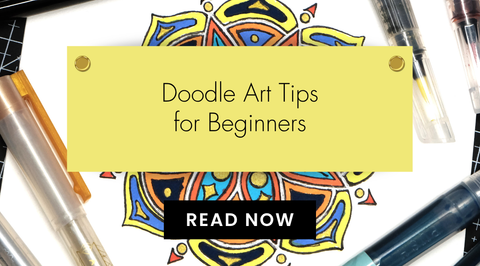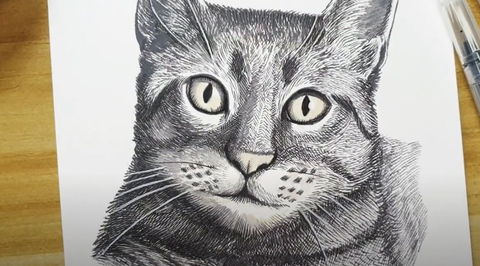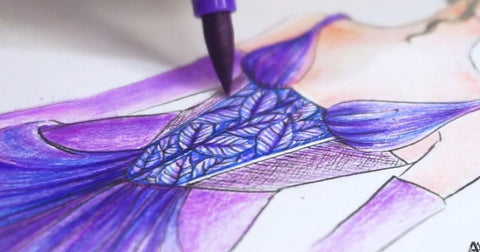The Revival of Traditional Art Forms in a Digital World
Last Updated: August 29, 2025
“The artist is a receptacle for emotions that come from all over the place: from the sky, from the earth, from a scrap of paper, from a passing shape, from a spider’s web.” Pablo Picasso
Everywhere you look in today’s modern world, you’ll see evidence of the rapid advancement of technology and the widespread adoption of digital platforms.
But to this day, Pablo Picasso’s words remain true. Although it may seem that traditional art forms have been overshadowed and relegated to the realms of the past, art is steadfast. Art is constant, and it is alive in every artist that allows themselves to craft with emotions as their guiding light.
And traditional art forms are seeing a renaissance. A fascinating and inspiring trend is emerging in connection with the revival of traditional art forms in the digital age.

As society becomes increasingly interconnected through screens and virtual experiences, there is a growing appreciation for traditional art’s beauty, craftsmanship, and cultural significance.
This resurgence not only serves as a means of preserving and honoring our rich cultural heritage but also offers a compelling contrast to the fast-paced nature of the digital world.
In this blog post, we will explore the revival of traditional art forms, examining the motivations behind this resurgence and how it enriches our lives in an increasingly digital landscape.
What Are Traditional Art Forms?
Traditional art forms encompass a wide range of creative expressions practiced by various cultures for generations.
These art forms differ across regions and communities, reflecting unique aesthetics, techniques, and cultural values.
Here is a list of different forms of art created and celebrated around the world:
- Painting - Perhaps the most famous, painting is a visual art form that involves applying pigments, colors, or other mediums to a surface, typically using a brush or other tools. Painting allows artists to convey ideas, emotions, and stories through colors, composition, and brushwork. It encompasses various styles, techniques, and subjects, allowing diverse artistic expression.
- Sculpture - Sculpture is a three-dimensional art form that involves the creation of objects or forms by shaping or manipulating materials such as stone, wood, clay, metal, plaster, or other materials. Sculptors use various techniques and tools to carve, model, or construct their works, resulting in physical objects that occupy space and can be viewed from different angles.
- Pottery and Ceramics - Pottery and ceramics are art forms that involve the creation of functional or decorative objects using clay and other materials. Artists and artisans shape the clay by hand or with tools, often using various cosmetic techniques like carving, painting, glazing, or adding textures.
- Calligraphy - Calligraphy is the art of beautiful writing, characterized by skilled and deliberate hand lettering or penmanship. It involves the creation of aesthetically pleasing and harmonious letterforms, often using specific scripts or writing styles. The practice of calligraphy emphasizes carefully arranging letters, strokes, and spacing to create visually appealing compositions.
- Textile Art - Textile art refers to creating works using textiles, fibers, and fabrics as the primary medium. It encompasses a wide range of techniques, styles, and forms that explore the creative possibilities of textile materials.
- Folk Art - Folk art refers to artistic creations that emerge from a particular community or group of people’s traditions, beliefs, and cultural practices. It is often characterized by its connection to everyday life, cultural heritage, and the collective identity of a specific region or ethnic group. Folk art is deeply rooted in local traditions and is often passed down through generations, maintaining its authenticity and distinctiveness.
Traditional Art Forms in the Digital World
Despite the booming popularity of social media platforms in today’s digital age, artists are finding a lot of happiness and fulfillment in traditional art.
Whether new or seasoned, artists have fallen in love with traditional art forms and are now showcasing them online for a bigger audience.

Here’s how these well-loved traditional art forms coexist in the digital world:
Online Communities and Platforms
The digital landscape has provided a global platform for artists and enthusiasts to connect, share, and learn about traditional art forms.
Online communities, forums, and social media platforms have become hubs for artists to showcase their work, exchange ideas, and collaborate across borders.
These platforms have increased the visibility of traditional art and facilitated knowledge-sharing and the preservation of traditional techniques.
For example, this platform’s blog—Meet the Artist Behind the Art is dedicated to artists and creative individuals. Whether you are a painter, sculptor, textile, or folk artist, this is the space to showcase your exceptional talents and share your inspiring experiences with a like-minded community.
Online Learning and Tutorials
Traditional art forms are being taught and learned through online platforms such as Artistry by Altenew, providing access to instruction and resources that may not be available locally.
Artists can now take virtual workshops, watch tutorials, and participate in online courses to learn traditional techniques from experts worldwide.
This democratization of knowledge empowers aspiring artists and enthusiasts to explore and practice traditional art forms with greater ease and convenience.
Digital Documentation and Archiving
With the advent of high-quality digital cameras and advanced imaging technologies, traditional art forms can now be documented and archived in greater detail.
Museums, cultural institutions, and individuals are digitizing and sharing their collections, making them accessible to a broader audience. This digital preservation ensures that traditional art forms are not lost to time and can be studied, appreciated, and replicated in the future.
Artists even digitize their actual artwork. Thanks to photo editing software, the digitized version can feature more vibrant colors, added whimsical effects, filters, and the likes! The artist now has quite a lot of tools to digitally enhance their art.

Woodless Watercolor Pencil 24 Set
But it’s not just the big institutions that can document artwork; artists can now archive and share their works of art online with art enthusiasts. Many even inspire beginners to craft by posting online painting sessions and similar content.
Traditional Art Forms Made Beginner Friendly
As we mentioned, even newbies can carve their name in the revival of traditional art forms.
How? Getting started on the following art activities need not be intimidating—the community is here for you!
- Budding artists can explore painting by using easy-to-use materials like watercolor and gouache.
- Explore calligraphy with high-quality and vibrant alcohol or water-based markers!
- Got a tradition you want to showcase or preserve? There’s nothing more lasting than preserving it as art. You can opt to paint or sketch it.
Join the Revival!
The revival of traditional art forms in the digital age demonstrates the power of technology to complement and enhance our connection with the past.
By embracing digital platforms, techniques, and collaborations, traditional art forms are finding new relevance and captivating audiences worldwide.
This revival breathes new life into age-old traditions, ensuring their preservation and fostering a deeper appreciation for their beauty and cultural significance.
Ready to explore your inner artist? Be inspired by the stories and art project ideas of creative individuals we featured in our Meet the Artist Behind the Art blog!






